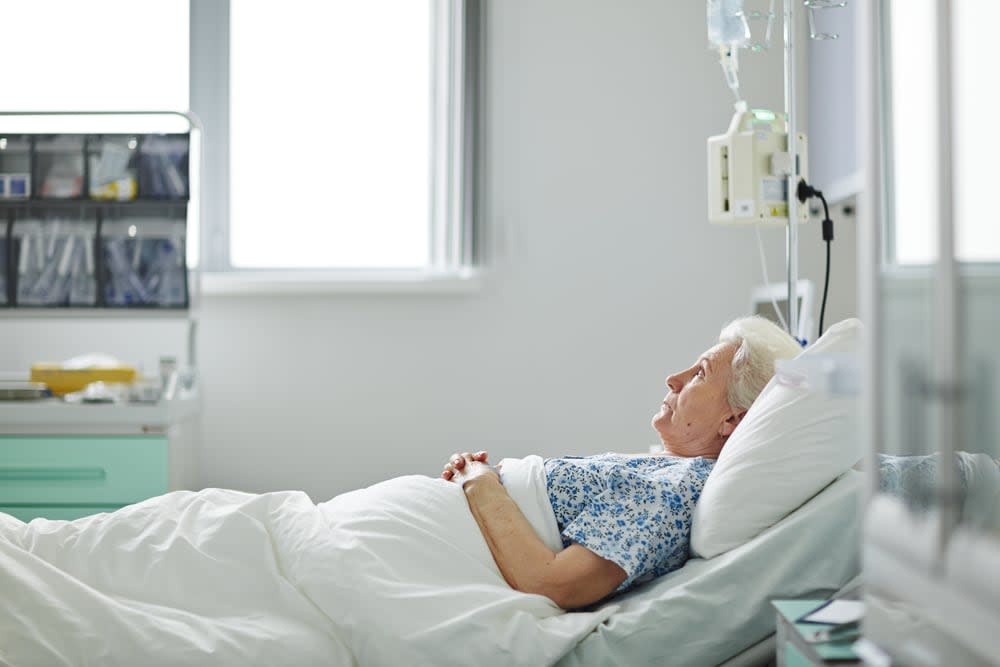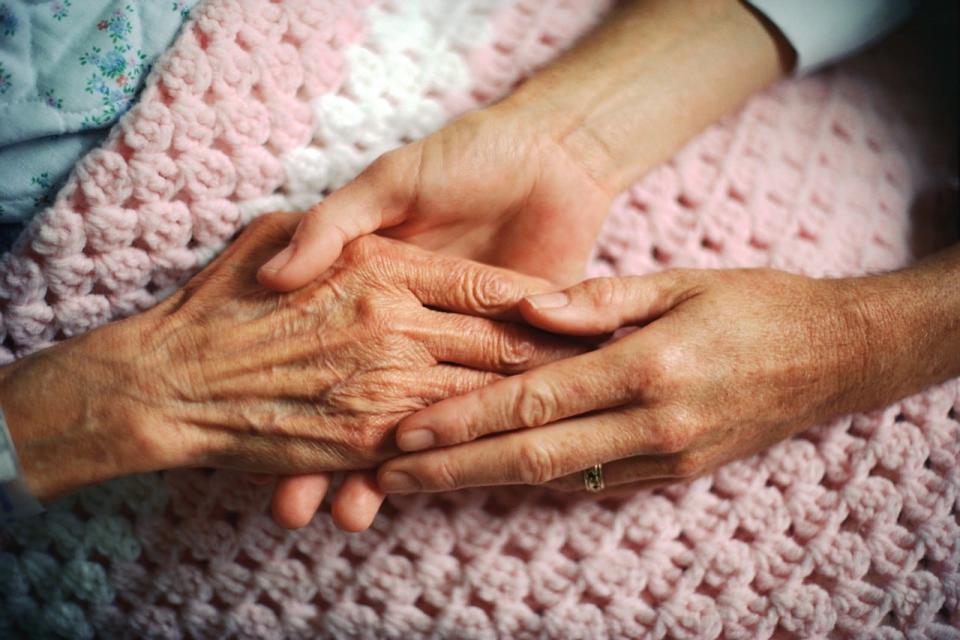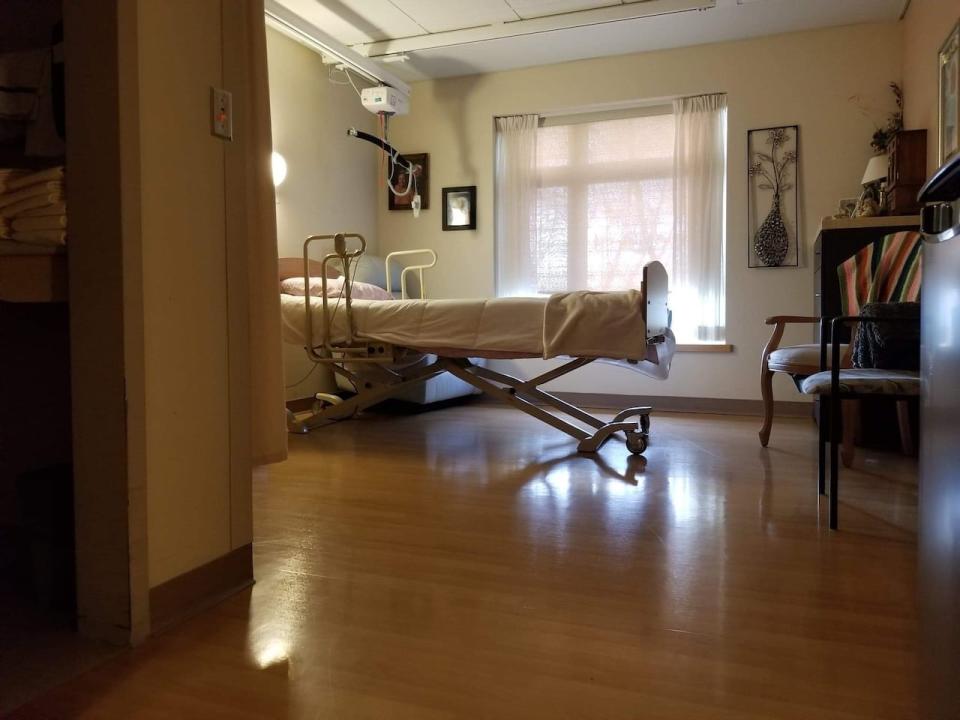'Exceptional circumstances' sees seniors at Saint John hospital given priority for nursing home beds

People waiting at the Saint John Regional Hospital for a nursing home bed are being given priority over other New Brunswickers who have been waiting longer under a new protocol used to address a lack of capacity in hospitals.
The Department of Social Development implemented temporary prioritization for these so-called alternate level of care (ALC) patients in Saint John on Jan. 4, due to the "critical" conditions at the hospital, said spokesperson Rebecca Howland.
"Under normal circumstances, nursing home admission is done chronologically," she said.
"However during critical state circumstances as defined by regulation, the minister of Social Development has regulatory authority to prioritize the admission of ALC patients waiting in hospital for nursing home placements, when requested by a Regional Health Authority."
According to the "critical state admission prioritization" regulation, which only took effect a few months ago, this change in priority can be enacted for up to 30 days at a time when:
The hospital's emergency room is over capacity and there are prolonged off-loading delays from ambulance bays.
Acute care units are over capacity.
There is cancellation of critical surgeries due to a lack of available hospital beds.
935 people on waitlist, 463 in hospital
As of Jan. 1, 935 people were waiting for a nursing home placement across the province, according to the department.
Of these, 463 were waiting in hospital and 472 were waiting in the community, either at home or in special care homes.
That's down from Dec. 1, when the provincial total was 949, said Howland.
About a year ago, 833 people were waiting, which was then a record high.
"The decision to enact the critical state measure is not taken lightly," Howland said. "However, this flexibility is necessary to deal with exceptional circumstances, such as the one being experienced at Saint John Regional Hospital."
She did not provide any specifics.
4 Horizon hospitals over capacity
Neither did the head of Horizon when she held a media briefing Friday to provide an update on its four regional hospital emergency departments.
Margaret Melanson, the interim president and CEO, did not single out the situation at Saint John Regional Hospital as being any more dire than the others.

Margaret Melanson, interim president and CEO of Horizon, said 542 long-term patients are tying up Horizon hospital beds, as of Friday. She did not say how many of them are at the Saint John Regional Hospital. (Horizon/Zoom)
The average occupancy level of all four hospitals — the Saint John Regional Hospital, the Dr. Everett Chalmers Regional Hospital in Fredericton, The Moncton Hospital and the Miramichi Regional Hospital — is 106 per cent, she said.
The national benchmark is 85 per cent.
Patients waiting for nursing home or special care home beds are a big factor, taking up a third of Horizon's inpatient beds, said Melanson.
"This creates an entire pressure on our system down to and including the emergency department in terms of our overall hospital capacity to care for newly admitted acute care patients," she said.
Patients who are treated in the emergency and require admission for acute care services must remain in the ER until an inpatient bed is available, which means longer wait times for people with non-urgent medical issues.
Melanson held the briefing following complaints of a filthy and overflowing Fredericton ER over the holidays and ambulances being diverted from The Moncton Hospital to the Dr. Georges-L.-Dumont University Hospital Centre earlier this week.
Prioritization to be re-evaluated Jan. 18
The Department of Social Development will re-evaluate the critical state prioritization for the Saint John Regional Hospital on Jan. 18 to determine next steps, said Howland.
Meanwhile, the department is working with Horizon and Vitalité to find "the right care at the right time" for New Brunswick seniors.
"Hospitals are built and staffed to diagnose and treat illness … They are not the most appropriate setting for those that need long-term care but are otherwise healthy," she said.
Still, New Brunswickers waiting for a nursing home bed have a say in where they go and may refuse a placement if they want to hold out for their preferred choice, noted Howland.

Hospitals are designed for medical and surgical treatment of unwell and injured people and don't provide the same kind of socialization or home-like setting that long-term care homes are designed to, said Social Development spokesperson Rebecca Howland. (Corbis)
The department does not have the same powers it did in the early months of the pandemic to move people from hospitals to a nursing home or special care home bed outside of their home communities.
In March 2020, the province moved 65 alternate level of care patients — people who have been medically discharged from hospital, but are awaiting long-term care placement — to make way for the anticipated influx of COVID-19 patients.
How it normally works
Normally, when a person applies for a spot in a nursing home, they identify two homes as their preferred choices and get added to the waitlists for those homes as well as the provincial waiting list.
If there's no vacancy at their preferred homes, they may be offered an interim placement at another nursing home, which must be within 100 kilometres of where they live, offer services in the official language of their choice, and can meet their care needs.
If they decline the interim placement and are currently living at home, they get bumped to the bottom of all waitlists. If they are waiting in hospital, however, they maintain their place on the lists.
Under the new Nursing Homes Act regulation, nursing homes must offer any vacant beds to alternate level of care patients from the "critical state" hospital.

More than 150 New Brunswickers find a nursing home placement each month, according to Social Development, but the government 'acknowledges that the wait times spent waiting in hospital for placement in a long-term care facility must be addressed,' said spokesperson Rebecca Howland. (Sam Juric/CBC)
"It's important to remember finding the right care for someone in a hospital doesn't always mean nursing home care," said Howland.
The department is working with the Nursing Home Association, the Special Care Home Association, as well as the Department of Health and the Regional Health Authorities to "identify opportunities."
Howland said the department is also still making progress on the 2018-2023 Nursing Home Plan, which called for 10 new homes, adding about 600 beds, she said.
It added 195 new nursing home beds last year and has added 15 more so far this year.
In addition, to help alleviate pressure on hospitals, 18 memory care beds were also awarded in Bathurst last year and 40 generalist care beds in Moncton.
Howland did not say how many beds have been added in total under the plan.
By 2035, people aged 65 and older are expected to constitute more than one-quarter of the population, the department has said.


